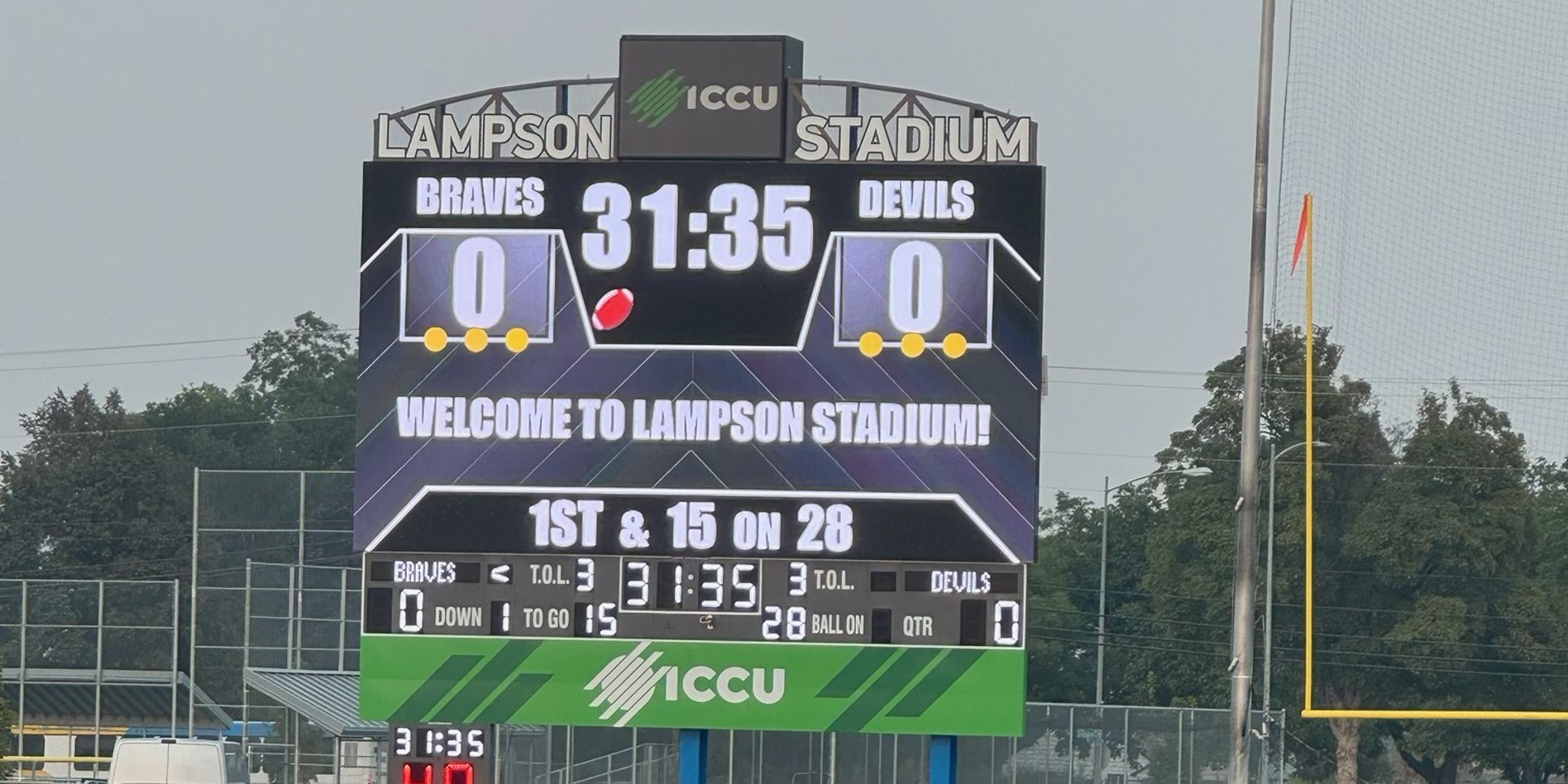How Idaho Central Credit Union Empowers Students Through Digital Displays
Idaho Central Credit Union is transforming high school sports and education through digital display sponsorships. Learn how ICCU’s partnerships with Daktronics empower students with hands-on experience in media, production, and content creation.
Matt Anderson on 10/8/2025
Categories: Business & Community

On this episode of The Daktronics Experience podcast, Justin and I had the chance to sit down with Clark Rasmussen, marketing sponsorship supervisor at Idaho Central Credit Union (ICCU). What started as a discussion about sponsorships turned into an inspiring look at how one organization has found a way to support schools, enhance education, and bring communities together, all through LED displays.
Clark’s career path has always revolved around sports and students. He started in athletic administration, spent time with the Atlanta Falcons, and worked in both college athletics and sponsorship sales. That background helped him find the perfect fit at ICCU, where he now oversees partnerships across high schools, colleges and community events.

When Clark joined ICCU, the marketing team was already strong, but sponsorships were handled collectively. Over time, it became clear they needed someone focused solely on building and managing these relationships. Clark took on that role and helped expand ICCU’s efforts to include digital scoreboards and video displays, a move that’s had a major impact across Idaho and beyond.
Their first high school project was at Madison High School in Rexburg, Idaho, back in 2017 or 2018. The school approached ICCU after running a bond to upgrade its athletic facilities, and ICCU agreed to sponsor a new video board. The project was already in motion when Clark joined, but seeing it through gave him a new perspective. “That’s where I started learning what kind of an impact these video boards could have on high schools,” he said.
From that experience, ICCU developed a model built on three pillars:
-
- Revenue generation. Displays give schools new opportunities to raise money through sponsorships and advertising.
- Educational experience. Students learn how to create and manage digital content, run live events, and operate professional-level equipment.
- Student opportunity. Through programs like Daktronics’ Crew Connect, students can showcase their work and even be recruited based on their creative skills.
Clark emphasized that ICCU doesn’t see these displays as just an investment in athletics. They’re an investment in students, especially those who may not be athletes but have talents in media, production and storytelling. “We’re providing opportunities for kids to showcase their talents in front of a crowd that’s already there because of a sporting event,” he said.
That approach has now led ICCU to install or sponsor more than 40 digital displays across Idaho, as well as new partnerships in Washington and Arizona. Sometimes they even order displays in batches, equipping entire school districts at once. “How cool is it that you get to go in and make an impact on an entire school district?” Clark asked. “It’s just so cool.”

The results speak for themselves. Schools have created booming student programs around content creation and live event production. One example is Valley View High School, where more than 170 students are now enrolled in a media class producing game-day videos and broadcasts. Another school, Canyon Ridge High School, took a few years to fully embrace its display but now uses it to elevate every game and event.
Clark’s advice for schools considering a project like this is simple: “Dive in and do it. Take the bull by the horns and go for it.” He knows each school is different and that success looks different everywhere, but when the right mix of teachers, students and technology comes together, the results can be transformational.
It’s not just about the technology, it’s about connection. Students see their work on a big screen, parents and grandparents cheer for both athletes and creators, and schools gain new ways to engage their communities. For ICCU and Clark, that’s what makes it all worth it.
And as Clark said, ICCU may help make it possible, but the real credit goes to the teachers and students who bring these displays to life. “Those are the people making the impact,” he said. “We’re just happy to be a part of it.”
